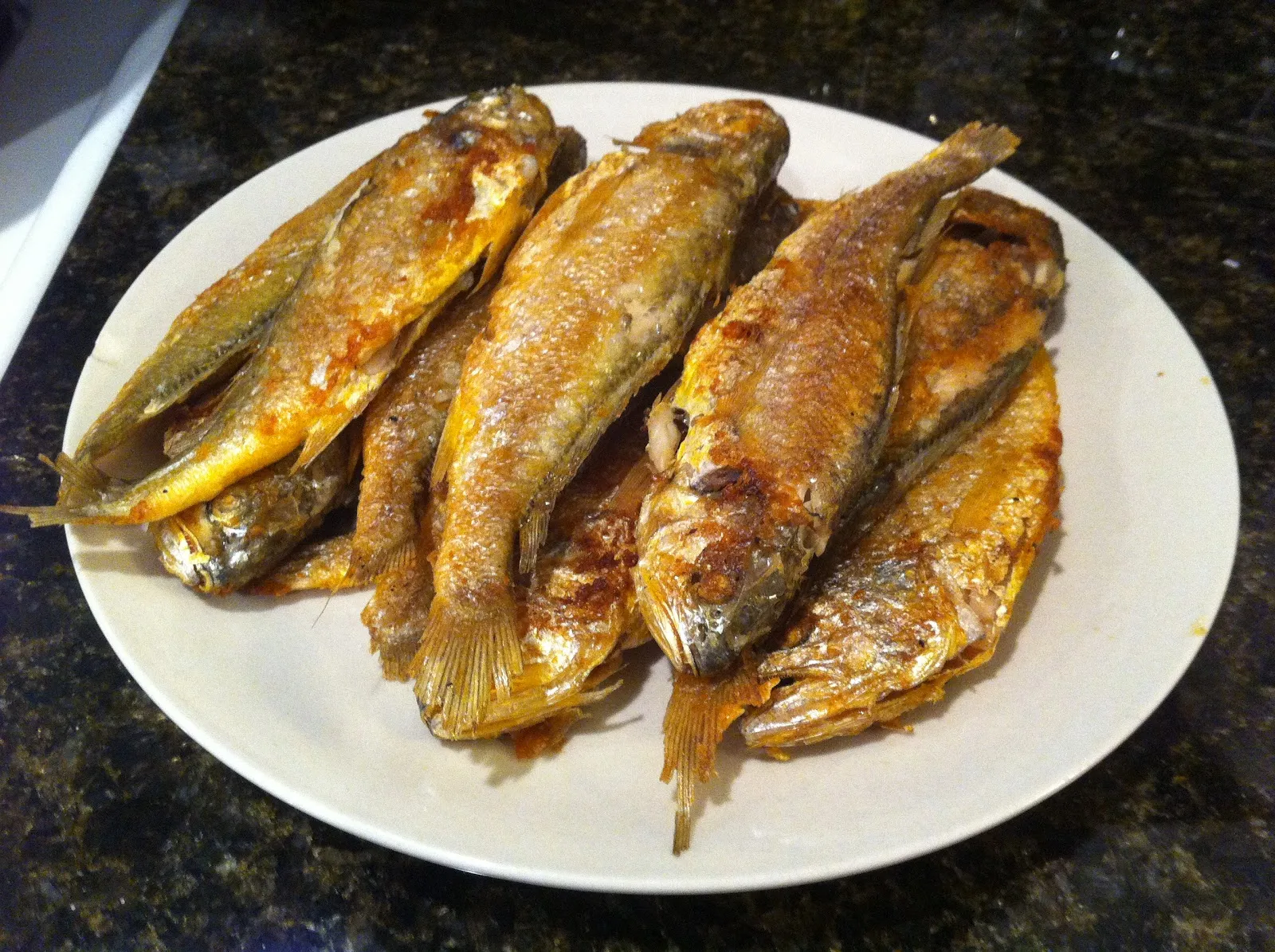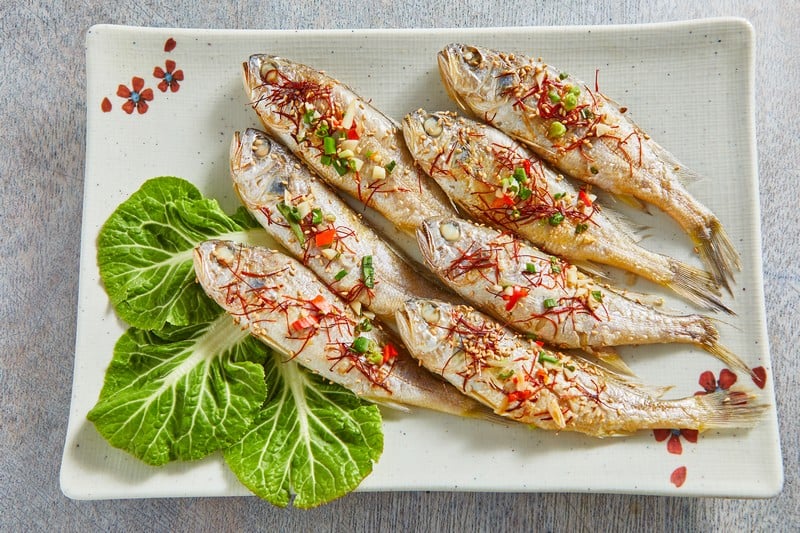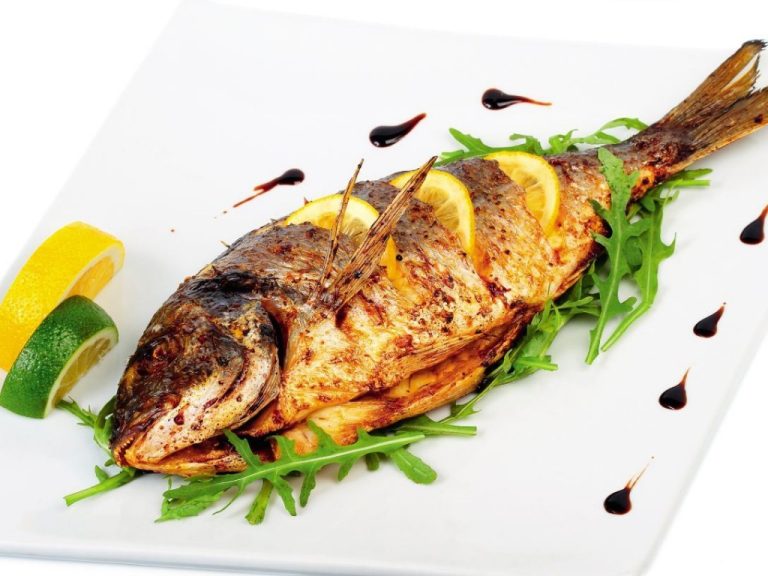Croaker fish is a delightful seafood option loved for its mild, slightly sweet flavor and tender, flaky texture. Its subtle taste makes it a versatile ingredient, perfect for various cooking methods such as grilling, frying, steaming, or baking. This fish is an excellent choice for those who enjoy seafood but prefer a flavor that isn’t overpowering, making it ideal for both seasoned food enthusiasts and beginners exploring new dishes.
Known for its adaptability, croaker fish pairs wonderfully with a range of seasonings, herbs, and marinades, enhancing its natural flavor. Popular in coastal cuisines, it’s a go-to ingredient in recipes like fish tacos, soups, and stews. Whether you’re savoring it fresh or experimenting with new cooking techniques, croaker fish provides a delicate yet satisfying taste that complements any meal.
Is Croaker Fish Delicious?
Yes, croaker is a delicious fish that’s well-regarded by seafood enthusiasts. Its mild, sweet flavor and delicate, flaky texture make it a versatile choice for various cooking methods. Croaker offers a subtle, not-too-fishy taste that appeals to a wide range of palates. Its flesh is soft and flakes easily, making it a joy to eat. A slight sweetness adds a pleasant dimension to its flavor profile.
How to Prepare Croaker Fish Dish
Croaker’s versatility allows it to be prepared in numerous ways:
- Pan-fried: A quick and easy method that yields a crispy exterior and a tender interior.
- Baked: A healthier option that retains the fish’s natural flavors.
- Grilled: Perfect for outdoor cooking, grilling imparts a smoky flavor.
- Fried: A classic Southern preparation that results in a crispy, flavorful dish.
If you’re a seafood lover seeking a new culinary adventure, croaker is definitely worth trying. Its pleasant taste and tender texture make it a delightful addition to any meal.
Croaker is a popular fish known for its mild flavor and tender texture. However, it does have a fair amount of bones, especially small pin bones that can be tricky to remove. The fish has a central spine and numerous rib bones, which can make the filleting process a bit challenging for those not accustomed to preparing fish.
When preparing croaker, it’s crucial to use a sharp filleting knife and take your time to carefully debone the fish. For those who prefer a less labor-intensive option, croaker can also be cooked whole; just make sure to properly gut and clean it before cooking. The skin crisps up nicely when cooked, adding a delightful texture to the dish. While it might require a bit more effort to prepare compared to other fish, the rewarding taste of a well-cooked croaker makes it worth the effort.

Pan-Fried Croaker Fish Recipe
Ingredients:
- 4 croaker fish fillets (fresh or thawed)
- 2 tbsp olive oil or butter
- 1 lemon (sliced)
- 1 tsp garlic powder
- 1 tsp paprika
- ½ tsp salt
- ½ tsp black pepper
- Fresh parsley (for garnish)
Instructions:
Benefits of Croaker Fish
Croaker fish is not only delicious but also packed with essential nutrients. Here are some of the key nutritional benefits:
- Lean Protein: Croaker is an excellent source of lean protein, which is crucial for building and repairing tissues. Lean protein can help you feel fuller for longer, reducing overall calorie intake.
- Omega-3 Fatty Acids: These healthy fats contribute to heart health, brain function, and reduced inflammation. These fatty acids are crucial for brain health and cognitive function.
- Vitamins and Minerals: Croaker provides a variety of vitamins and minerals, including vitamin B12, selenium, and phosphorus. It fits well into a balanced diet, providing essential nutrients without excessive calories or fat.
Croaker Fishing Tips
Two popular methods for catching croaker are bottom fishing and jigging. Bottom fishing involves casting a weighted hook baited with worms, shrimp, or other enticing offerings to the bottom of the water column, where croaker often reside.
Jigging, on the other hand, utilizes a jig, a weighted lure that is rhythmically raised and lowered to attract the attention of croaker. Both techniques require patience and a keen eye to detect the subtle bites of these elusive fish.
When it comes to bait and lures for croaker fishing, a variety of options can be effective.
Natural Baits
- Shrimp: Fresh or frozen shrimp is a classic choice that consistently attracts croaker.
- Bloodworms: These marine worms are highly effective, especially during the early fishing season.
- Squid: Cuttlefish or squid strips are another popular option, particularly during the warmer months.
- Clams and Oysters: These can be effective, especially when fished on the bottom.
Artificial Lures:
- Bucktails: These jigs with hair or synthetic fibers can be effective when jigged near the bottom.
- Soft Plastic Baits: Small soft plastic baits, such as Gulp! shrimp or curly tails, can be rigged on a jig head and fished slowly along the bottom.
- Small Spoons: Castable spoons can be retrieved slowly near the bottom to entice strikes.
Remember, the best bait or lure can vary depending on local conditions, water temperature, and the specific behavior of the fish. Experimenting with different options can help you find what works best in your area.
Croaker can be found in various freshwater and saltwater environments. In saltwater, popular fishing spots include the Chesapeake Bay, Delaware Bay, and the coastal waters of the Atlantic and Gulf of Mexico. Look for areas with sandy or muddy bottoms, such as inlets, bays, and estuaries.
In freshwater, croaker can be found in rivers, lakes, and ponds, especially those with slow-moving currents and abundant vegetation. Popular freshwater destinations include the Mississippi River and its tributaries. Remember to check local fishing regulations and obtain necessary permits before heading out.

Croaker Fish in Different Cultures
Croaker fish holds cultural significance in various regions. In the Southern United States, particularly along the Gulf Coast, croaker is a beloved seafood staple, often featured in regional cuisine. It’s associated with coastal traditions and family gatherings. In Asian cultures, croaker is also prized for its delicate flavor and is used in a variety of dishes, from stir-fries to soups. In some cultures, it’s even considered a symbol of good luck and prosperity.
Here are a few traditional recipes featuring croaker fish from different cultures:
- Southern Fried Croaker: A classic American dish, this recipe involves dredging croaker fillets in seasoned flour and frying them until crispy and golden brown. It’s often served with tartar sauce and hush puppies.
- Korean Fried Croaker: In Korean cuisine, whole croaker fish is often deep-fried until crispy. It’s then served with a dipping sauce made from soy sauce, vinegar, and chili peppers.
- Cantonese Steamed Croaker: This Chinese dish features steamed croaker fish with ginger, scallions, and soy sauce. It’s a simple yet flavorful dish that highlights the delicate taste of the fish.
- Cajun Blackened Croaker: A spicy Cajun-inspired recipe, blackened croaker is seasoned with a blend of paprika, cayenne pepper, and other spices. It’s often served with a side of rice and vegetables.
These are just a few examples of the many delicious ways to prepare croaker fish. By exploring different cultural cuisines, you can discover new and exciting flavors.
Croaker Fish Sustainability
Sustainable fishing practices are crucial to protect croaker populations and ensure their long-term viability. Overfishing and destructive fishing methods can deplete fish stocks and harm marine ecosystems. To maintain healthy croaker populations, it is essential to adhere to size and catch limits, use selective fishing gear, and avoid discarding unwanted fish.
Additionally, supporting sustainable fisheries certification programs and choosing seafood from responsibly sourced suppliers can contribute to the conservation of croaker and other marine species.
To make eco-conscious choices when purchasing and consuming croaker, consider the following tips:
- Choose sustainably sourced fish: Look for certifications from organizations like the Marine Stewardship Council (MSC), which ensures that fish are harvested using sustainable methods.
- Buy local: Purchasing locally caught croaker can reduce the carbon footprint associated with transportation and processing.
- Minimize waste: Cook the entire fish, including the head and bones, to reduce food waste.
- Compost fish scraps: Food scraps from croaker can be composted, providing nutrients to the soil.
- Support sustainable fishing practices: Encourage sustainable fishing practices by choosing seafood from responsible suppliers.
Expert Tips for the Perfect Croaker Fish Experience
- When buying croaker, look for fish with bright eyes, firm flesh, and a mild, fresh odor.
- Store fresh croaker in the refrigerator, wrapped in plastic wrap or placed in a sealed container. For longer storage, consider freezing the fish.
- While croaker can handle bold flavors, its delicate taste shines through with simple seasonings like salt, pepper, lemon, and herbs.
- Overcooking can lead to dry and tough fish. Cook croaker until it flakes easily with a fork.
- Pair your croaker dish with complementary sides like roasted vegetables, rice, or a fresh green salad.
- Whether you prefer pan-frying, grilling, baking, or broiling, croaker is a versatile fish that can be cooked in various ways.
- Experiment with different sauces to elevate your croaker dish. A simple lemon-butter sauce, a spicy Cajun sauce, or a creamy dill sauce can all complement the fish’s delicate flavor.
- While you can purchase pre-cleaned croaker fillets, learning to clean and gut the fish yourself can be a rewarding experience.
- Don’t forget to share your delicious croaker recipes and photos on social media.
- By making conscious choices and supporting sustainable fishing practices, you can help ensure the future of croaker and other marine species.
Final Thoughts
Croaker fish, with its mild flavor and delicate texture, offers a delightful culinary experience. Whether you’re a seasoned seafood lover or a curious newcomer, this versatile fish is worth exploring. By considering sustainable fishing practices and preparing it with care, you can enjoy the many benefits of croaker fish while helping to protect our oceans.
So, the next time you’re at the fish market, don’t hesitate to give croaker a try. You might just discover a new favorite seafood as a meal or a snack.









